Role of oxygen in wound healing Hanna Kaufman
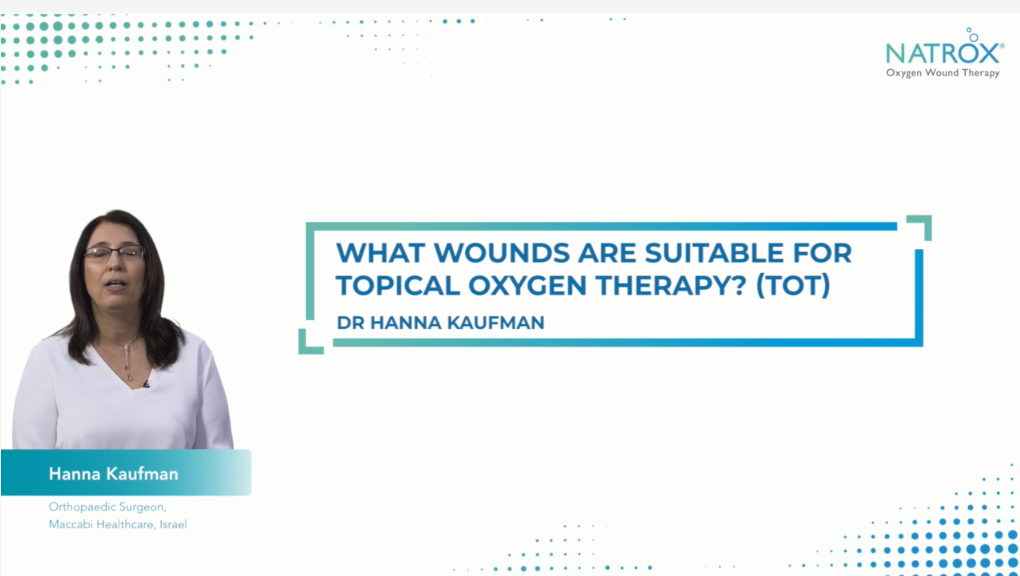
This Wounds International webcast focuses on the role of oxygen in wound healing and how topical oxygen therapy can improve oxygenation and, therefore, healing. In this presentation, Hanna Kaufman, Orthopaedic Surgeon, Israel, looks in depth at the clinical evidence and how this can be applied to practice. Hanna identifies the wounds that are suitable for topical […]
Role of oxygen in wound healing Tjun Tang
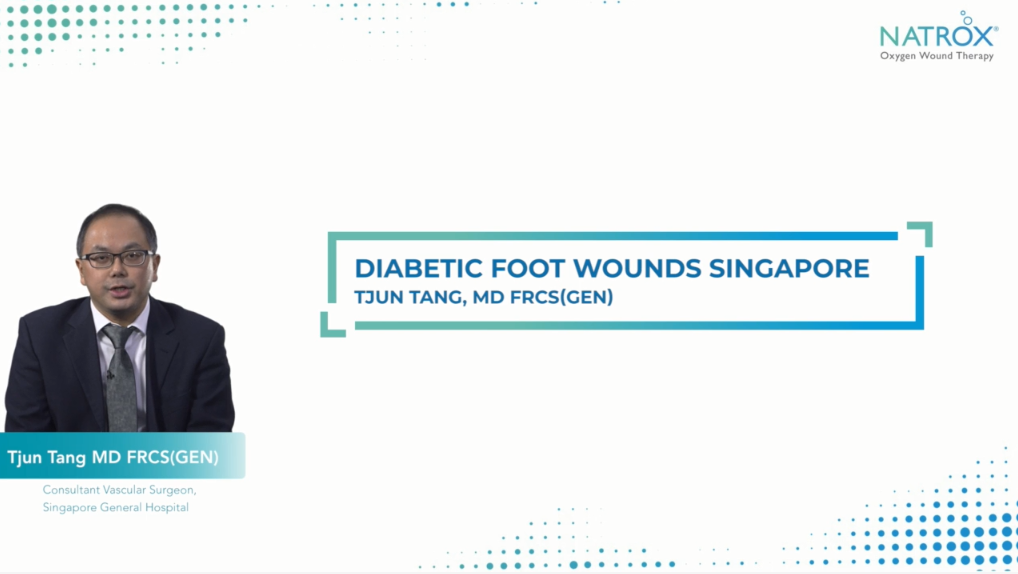
This Wounds International webcast focuses on the role of oxygen in wound healing and how topical oxygen therapy can improve oxygenation and, therefore, healing. In this presentation, Tjun Tang, Vascular Surgeon, Singapore, looks at the role of topical oxygen therapy in limb salvage.
Natrox® — Let the topical oxygen flow for healing complex wounds
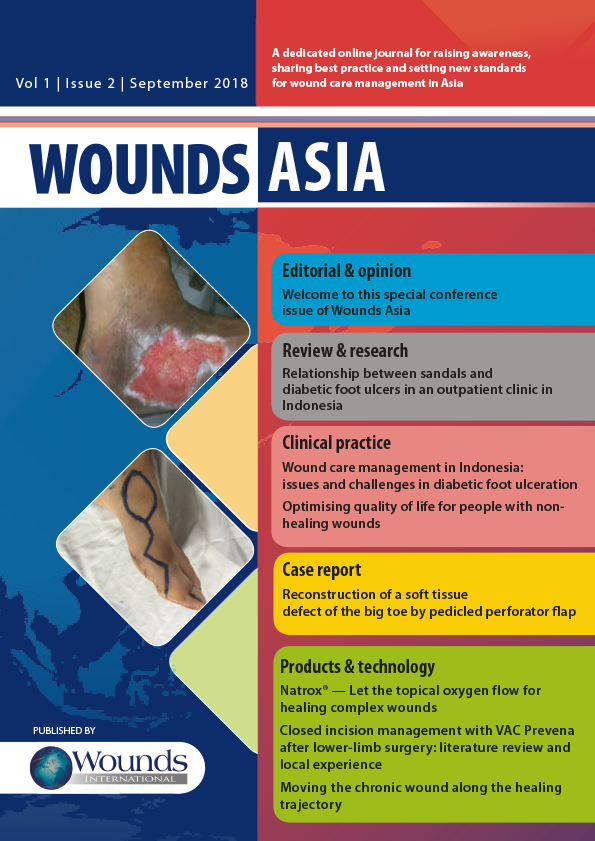
The presence of a wound increases the body’s requirement for oxygen by 20% for a patient with a clean wound and by 50% for an infected wound (Dernling, 2009). Oxygen is critical to many of the processes required in wound healing including the production of energy to fuel cell function and metabolism, angiogenesis, collagen synthesis […]
SMARTPORE Technology Made Easy
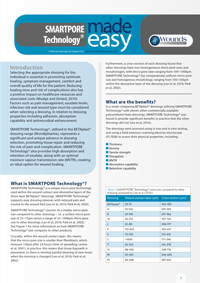
Selecting the appropriate dressing for the individual is essential in promoting optimum healing, symptom management, comfort and overall quality of life for the patient. This Made Easy describes SMARTPORE Technology®, utilised in the BETAplast® dressing range (Mundipharma). SMARTPORE Technology® provides high absorption and retention of exudate, along with an optimal moisture vapour transmission rate (MVTR), creating an ideal […]
Challenging wounds, improving outcomes — Treatment of complex diabetic foot wounds using topical oxygen therapy
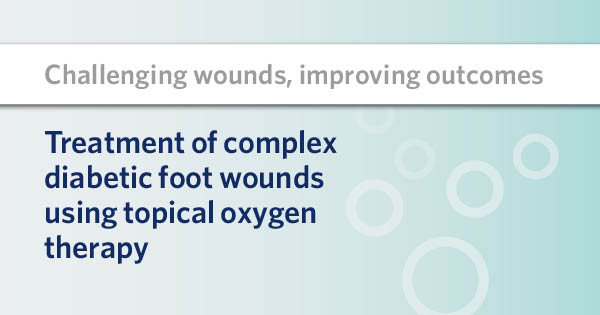
The essential role of oxygen in wound healing is well documented, and recent developments in the delivery of topical oxygen therapy has made this a more viable treatment in practice (Harding, 2016). Diabetic foot ulcers (DFUs) are a significant and growing problem, compounded by lack of resources in general wound care, making this a challenging […]
Case studies evaluation: Using ULTRASORBS® AP Drypads for moisture management
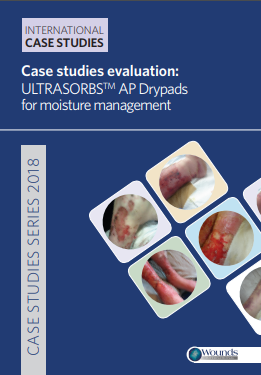
Moisture-associated skin damage (MASD) describes the spectrum of damage that occurs in response to the prolonged exposure of a patient’s skin to perspiration, urine (Beeckman et al, 2015), faeces or wound exudate (Grey et al, 2011). When exposed to excessive amounts of moisture, the skin softens, swells and becomes wrinkled (Dowsett and Allen, 2013). Additionally, […]
Presidents video WUWHS
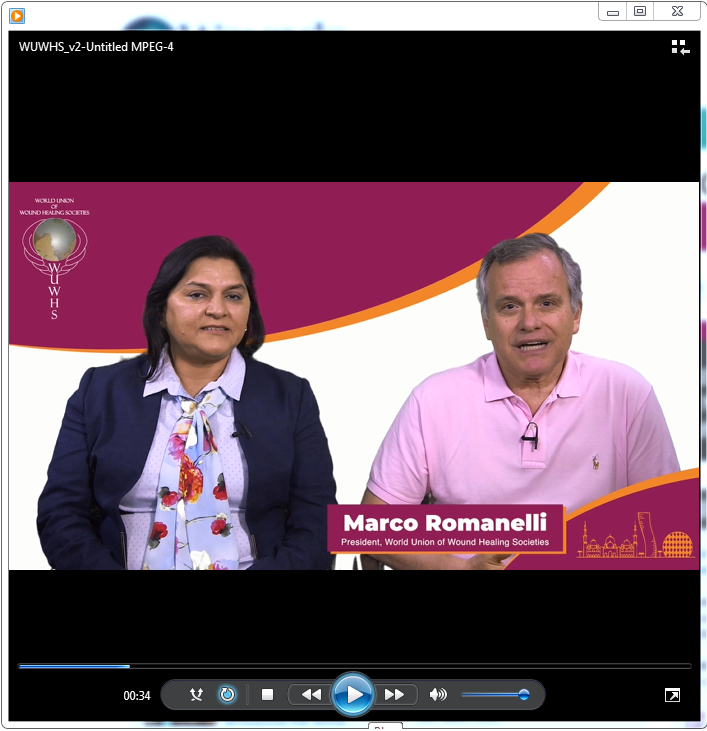
ALLEVYN LIFE: Making the Case
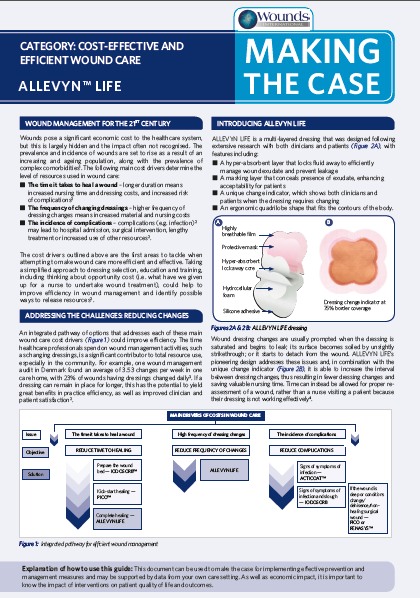
ALLEVYN LIFE is a multi-layered dressing designed following extensive research. This document can be used to make the case for implementing effective prevention and management measures in the clinic, taking into account the economic impact of the interventions on patient quality of life and outcomes.
Triangle of Wound Assessment
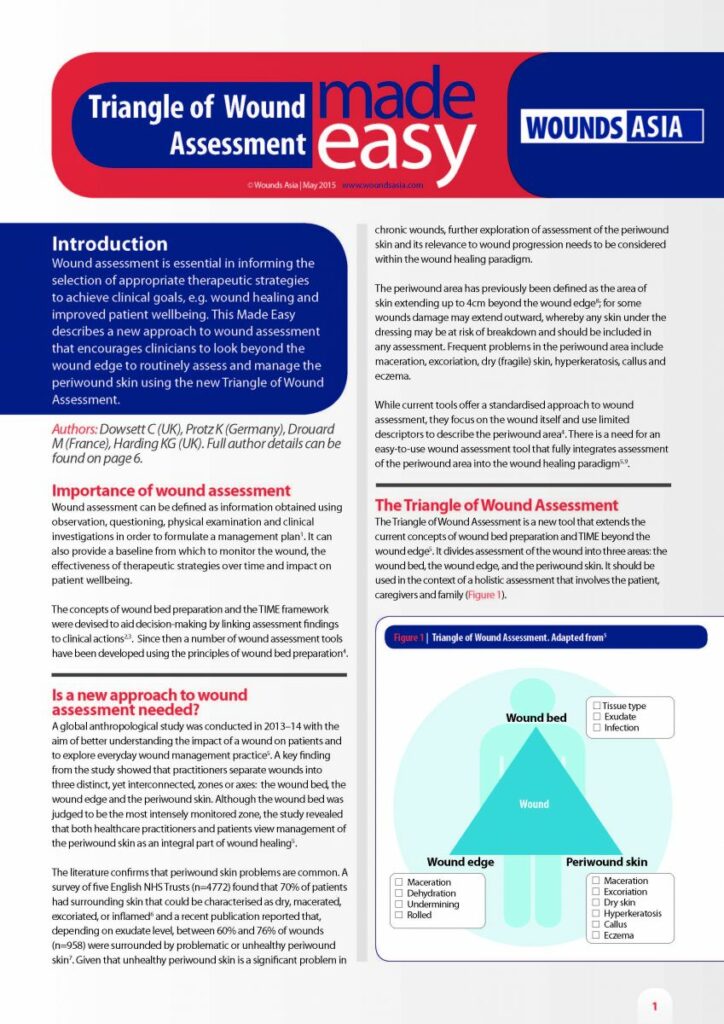
Wound assessment is essential in informing the selection of appropriate therapeutic strategies to achieve clinical goals, e.g. wound healing and improved patient wellbeing. This Made Easy describes a new approach to wound assessment that encourages clinicians to look beyond the wound edge to routinely assess and manage the periwound skin using the new Triangle of Wound Assessment. Translations
Decisions: they are never easy! But this is what we would like to do and here are the reasons why
<p>Over the past decade, and particularly in the past few years, we have seen a shift of focus from the specific issues presented by the patient in front of us, to actions based on reports about conditions similar (but often not exactly the same) as those presented by the patient. </p>
Improving patient outcomes: decorative tattoos, breast cancer and lymphoedema
<p>Background: Breast cancer-related lymphoedema (BCRL) is a chronic complication following breast cancer treatment, and is associated with adverse physical and psychological outcomes. Decorative tattoos have become tremendously popular in recent years among breast cancer survivors, with emotive images flooding online search engines and social media channels. However, a possible clinical practice issue is highlighted, with […]
The hybrid approach to treating severe lower-extremity lymphoedema
<p>Treating patients with severe lymphoedema can be challenging due to the recurrence of oedema over time. This case study illustrates how using different approaches provided a longer-term solution for a patient. A combination of traditional combined decongestive therapy, self-care and surgery were used to provide a successful outcome.</p>
Axillary Web Syndrome: a case presenting during neoadjuvant chemotherapy for breast cancer
<p>Background: Axillary Web Syndrome (AWS) was described by Moskovitz et al (2001) as a palpable web of tissue emanating from the axilla, causing pain and restricting arm movement in a subset of patients after axillary lymph node dissection. They associated it with surgical disruption of the superficial lymphatic system. Aims: AWS onset in a woman […]
Lower-limb oedema at the end of life: how common is it?
<p>Objectives: Oedema at the end of life is an undertreated and burdensome problem in palliative care patients, but its prevalence and association with risk factors is unknown. The authors aimed to investigate the prevalence of lower-limb oedema at the end of life in a palliative care population and measure the associated risk factors. Methods: A […]
Head and neck lymphoedema and fibrosis: a case study
<p>Introduction: Accurate techniques for measurement of head and neck lymphedema and fibrosis (LEF) are lacking. Shear wave elastography (SWE) is a new sonographic method to assess soft tissue elasticity. Objective: To present a case report of a head and neck cancer (HNC) patient with LEF whom was assessed using SWE. Methods: A 41-year-old patient with […]
Living with lymphoedema after treatment for breast and gynaecological cancers in Singapore
<p>Background: Lymphoedema is a chronic swelling of the affected body part and can occur after surgical removal of lymph nodes and radiotherapy. It can have a debilitating impact on the lives of those affected. Aim: This study aimed to explore the experience of Singaporean women living and coping with lymphoedema. Methods: A semi-structured interview was […]
Manual lymph drainage without compression therapy can reduce chronic oedema: a case study
<p>Best practice in the management of lymphoedema involves manual lymph drainage (MLD), skin care, exercise and compression therapy. Omission of any component, especially compression therapy, is not expected to achieve sustainable reduction in oedema volume. Evidence for the necessity to include MLD is inconsistent, however. This case study on leg lymphedema secondary to orthostasis shows an unexpected […]
The meaning of success in lymphoedema management
<p>Background: Lymphoedema is a chronic disease that requires a lifelong management. Complex decongestive therapy is the recommended treatment, which consists of intensive and of long-term management phases. The goals of treatment can be different for the therapist or for the person who lives with lymphoedema. No study has examined the perception of treatment success of […]
Negative pressure therapy in the management of lymphoedema
<p>Lymphoedema involves chronic tissue inflammation with tissue changes that include extracellular free fluid accumulation, tissue fibrosis and fatty tissue deposition (Zampell, 2012). Despite the best efforts of modern conservative lymphatic therapy, some patients will progress to develop significant secondary tissue changes with morbidity evident via recurrent bouts of cellulitis, reduced function and lowered quality of […]
Using the Juzo® Adjustable Compression System during the intensive phase of lymphoedema management
<p>It is widely accepted that lymphoedema management fluctuates between patient-led maintenance therapy and specialist-led intensive therapy, but with advances in fabric construction and pressures on funding and time within clinic settings, it is becoming both possible and important to consider alternate ways to offer intensive treatment. Could the Juzo® Adjustable Compression System ( Juzo UK) […]
Improving patient access to compression garments: an alternative approach
Following negative audit findings from patients obtaining hosiery through the drug formulary, local NHS commissioners enabled Lymphoedema Specialist Services Ltd (LSS) to purchase garments directly from hosiery suppliers as part of a compression hosiery ordering project (CHOP). This article describes the rationale for, process involved in and outcomes of CHOP, which commenced in 2015. […]
Abstracts from the 7th Joint International Lymphoedema Framework and Italian Lymphoedema Framework Conference
<p>This meeting was held in the beautiful city of Siracusa, Italy; a world heritage site. Of particular relevance to this meeting is the rich and deep history and involvement of Italian scientists, anatomists and clinicians in the creation of our knowledge about the lymphatic system, its structure and function, and of the impact of its […]
Case studies evaluation: ADAPTIC TOUCH™ Non-Adhering Silicone Dressing in skin tear management
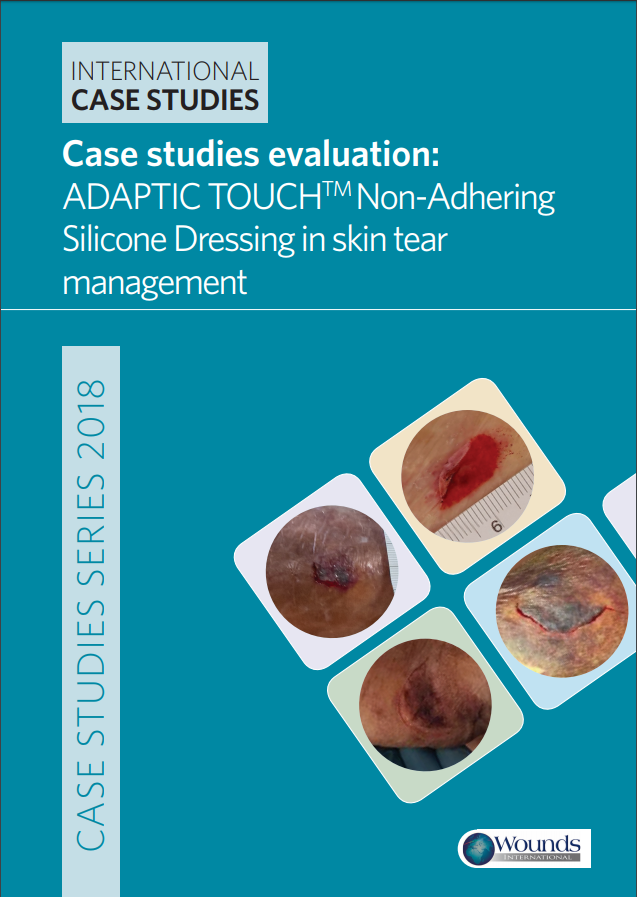
This International Case Studies Evaluation describes use of ADAPTIC TOUCH Dressing in the management of patients with skin tears categorised according to the STAR Skin Tear Classification or ISTAP Skin Tear Classification. Supported by KCI – An Acelity Company
Retrospective case studies evaluation: IODOSORB◊ in biofilm-based wound care
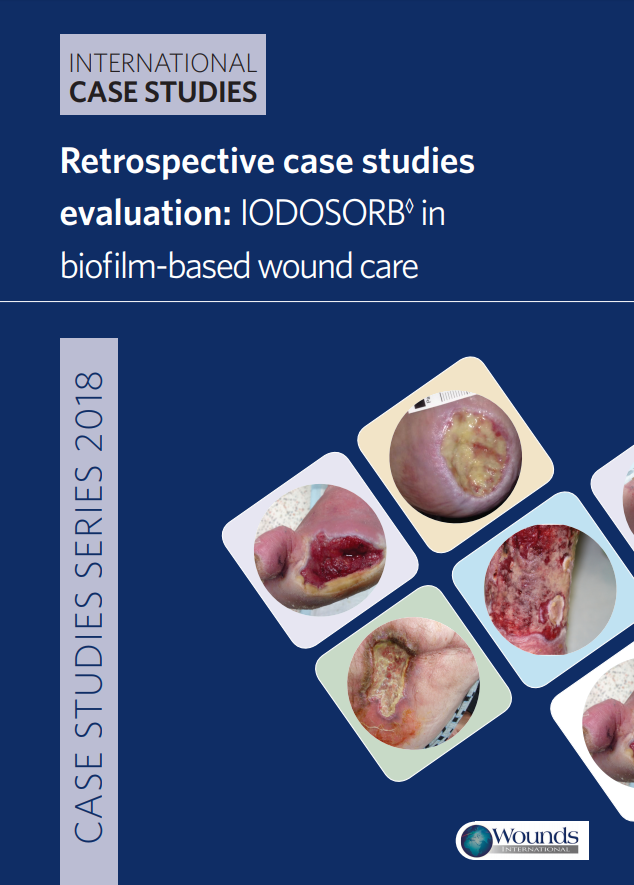
This International Retrospective Case Studies Evaluation presents eight cases from Australia, Czech Republic, Denmark and the UK that involve the use of cadexomer iodine (IODOSORB◊) as part of the wound management plan of chronic wounds. Supported by Smith & Nephew
Mechanical dNPWT Made Easy
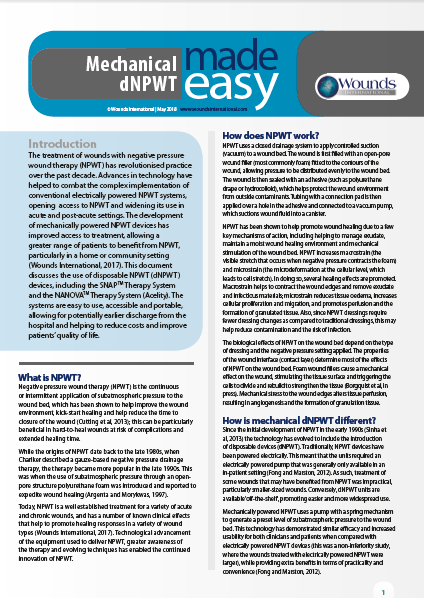
This Made Easy discusses the use of disposable negative pressure wound therapy (dNPWT) devices, including the SNAP Therapy System and the Nanova Therapy System, and how these can be used in practice. Supported by Acelity
Prontosan Debridement Pad Made Easy
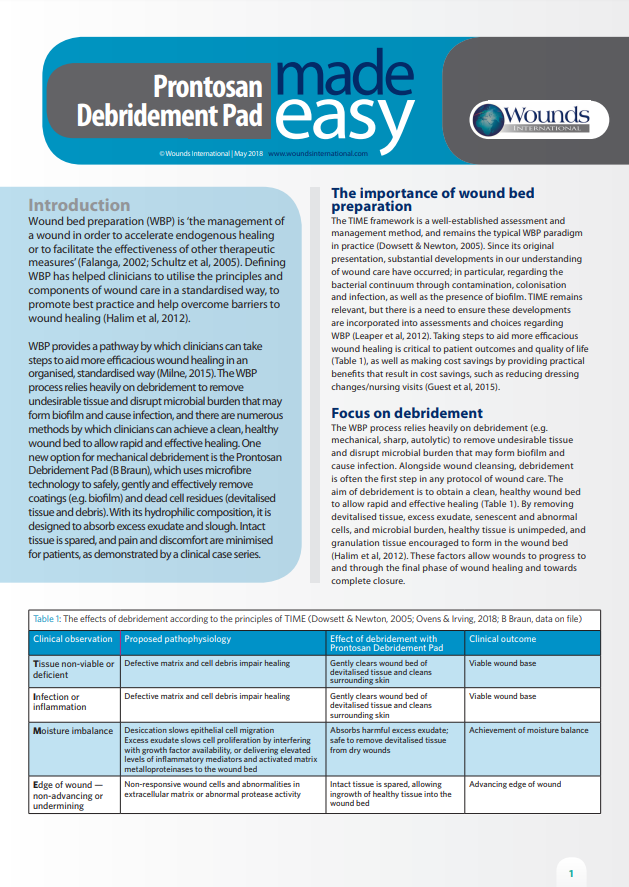
This Made Easy explains the importance of wound bed preparation (WBP) and how the Prontosan Debridement Pad, utilising microfibre technology, may be used to improve the process as part of a multi-pronged biofilm-based wound care approach. Supported by B Braun
ISTAP Best Practice Recommendations for the prevention and management of skin tears in aged skin
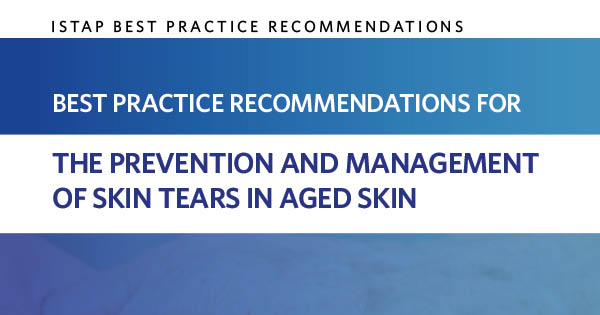
Skin tears are a significant problem for patients and the healthcare practitioners who treat them. The International Skin Tear Advisory Panel (ISTAP) convened a group of experts to provide internationally recognised recommendations for the prevention and management of skin tears, with updated definitions and terminology. Supported by 3M, KCI – An Acelity Company, Medline and […]
Quick Guide: Using IODOSORB in practice
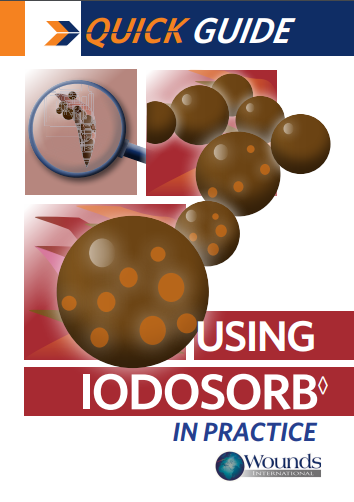
This Quick Guide outlines the use of IODOSORB as part of a biofilm-based wound care approach and provides helpful tips for it’s implementation in practice. Supported by Smith & Nephew
IODOSORB for wound bed preparation before using PICO system in hard-to-heal wounds
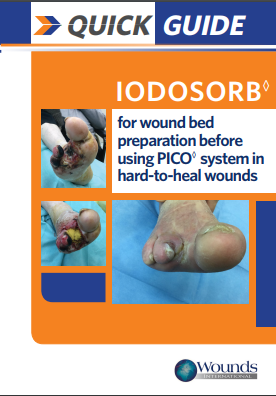
Resolving infection is a vital part of wound bed preparation. This Quick Guide describes the rationale for IODOSORB use prior to negative pressure wound therapy with the PICO system. Supported by Smith & Nephew
Keeping it local in Yorkshire
After moving back to the north of England and moving in with my girlfriend after 12 fantastic years in the big smoke of London, I’m reconnecting with my home county of Yorkshire. It’s taken time to get accustomed with full-time home working, but my little office is proving a success as I get used to spending […]
The future of wound care in Poland
<p>The 2018 conference of the European Wound Management Association (EWMA) will be held on 9–11 May in Krakow, Poland, and is co-organised by the Polish Wound Management Association (PWMA).</p>
Extrapolation of evidence related to dressings for pressure ulcer prevention may compromise patient safety
<p>This paper, written by an international group of experts in the bioengineering and clinical aspects of the design, use and evaluation of dressings for pressure ulcer prevention, addresses a central question commonly faced by the medical device industry, clinicians and patients. The question being whether evidence obtained for a specific product can be extrapolated to […]
Ten top tips: prevention of surgical site infections
<p>Surgical site infection (SSI) is defined as infection of an operated site developing within 30 days after the operation, or within 1 year if an implant is present. SSIs are classified according to the affected tissue as superficial, deep and organ/space infections (Anderson et al, 2014).</p>
Incontinence-associated dermatitis: why do we need a core outcome set for clinical research?
<p>Incontinence-associated dermatitis: why do we need a core outcome set for clinical research?Incontinence-associated dermatitis (IAD) is a type of irritant contact dermatitis related to chemical and physical irritation of the skin barrier, triggering inflammation and subsequent skin damage. Management of IAD should essentially focus on skin cleansing to remove the irritant, debris and microorganisms; skin moisturisation to […]
Massive localised lymphoedema: a review of published literature on this unique entity
<p>Massive localised lymphoedema: a review of published literature on this unique entityMassive localised lymphoedema (MLL) is a unique presentation of lymphoedema in morbidly obese patients, located most commonly in the medial thigh. MLL presents as a localised painless mass of lymphoedematous tissue. However, it is more generalised condition than the name implies, since it restricts patient’s activities […]
Clinical innovations: can dressings help to prevent pressure ulcers in high-risk nursing home residents?
<p>The aim of this paper is to present current and emerging clinical and scientific evidence for the prevention of pressure ulcers in highly dependent aged care residents. The authors discuss recent developments in the use of multilayer silicone foam dressings used prophylactically in both the acute and nursing home settings and explain this preventative approach […]
Challenging silver: a comparison of in vitro testing methods
<p>There is no current British Standard for testing the antimicrobial efficacy of dressings. Several other methods have been devised by microbiologists to demonstrate efficacy of the antimicrobial agent. In this study, three methods – transmission, translocation and challenge testing – were used to assess the antimicrobial efficacy of seven silver dressings. Four dressings were tested […]
Prevention and management of pressure injury to the heel
<p>Pressure injuries on the heels often occur in immobile patients. The risk factors for these injuries stem from the anatomy of the calcaneus, impairments in blood flow to the foot and neuropathic disease. There are many clinical considerations in the prevention of heel pressure injury. This article addresses the epidemiology and economic impact of heel injury, […]
Endothelial glycocalyx layer and interdependence of lymphatic and integumentary systems
<p>The endothelial glycocalyx layer controls movement of proteins and fluid across the blood capillary wall and there is no reabsorption back into the venous side of blood capillaries. Reabsorption occurs through lymphatic capillaries alone; consequently, a new paradigm of all oedemas falling into a continuum of relative lymphatic dysfunction is embraced. Additionally, areas of lymphatic […]
Case studies evaluation: Using advanced wound dressings in the local management of diabetic foot ulcers
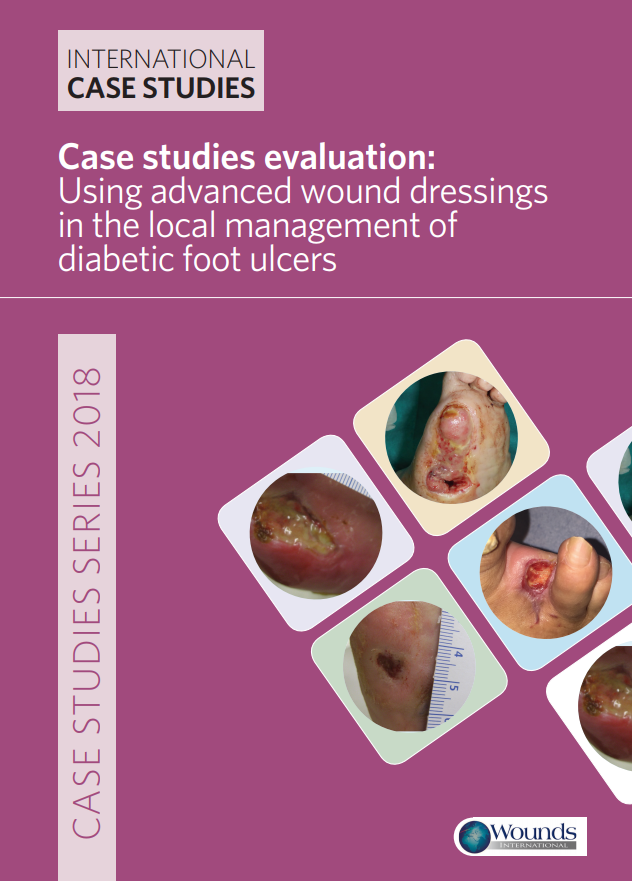
This case study supplement describes the use of a range of Acelity dressings in the management of diabetic foot ulcers (DFUs) in patients with complicating factors, including infection, co-morbidities, previous amputation and polypharmacy. Supported by KCI – An Acelity Company
Wounds digest 9(1)
In this section, a brief synopsis is presented of a range of recently published articles that may be of interest to healthcare professionals working in the wound care setting. The aim of this round-up is to provide an overview, rather than a detailed summary and critique, of the research papers selected. Full references are provided […]
Muscle strength and functional exercise capacity in patients with lipoedema and obesity: a comparative study
Muscle strength and functional exercise capacity in patients with lipoedema and obesity: a comparative study
The story of my legs – a long and winding road to a good outcome
When I was younger, for many years I suffered all kinds of illnesses, including pneumonia, scarlet fever, diphtheria, mumps and tonsillitis. I never went to hospital — my mum cared for me at home. I think that is why my lymph nodes worked overtime; you can’t keep working at 100% all the time without some […]
Rising to the global challenge of wound care
The data are stark. The annual cost associated with treating and managing the wounds and comorbidities of 2.2mn patients within the NHS in the UK stood at £5.3bn in 2012/13, according to the Burden of Wounds study (Guest et al, 2015). On top of this, The prevalence of wounds has been estimated to be increasing […]
The use of compression wraps in the management of lymphoedema
There is increasing interest in the potential value of compression wraps in the management of lymphoedema and other disorders of the circulatory system. Given the significant unit cost of these materials, the All Wales Medical Devices Strategy Group commissioned an independent review of the literature to determine if these devices represent a cost-effective option for […]
Clinical innovation: the Sandy Grading System for Surgical Wound Dehiscence Classification — a new taxonomy
The worldwide volume of surgery is considerable, with an estimated 234.2mn major surgical procedures carried out every year (Weiser et al, 2008). While contemporary surgical procedures are relatively safe, complications such as surgical wound dehiscence, although not commonplace, are a major disruptor to patient wellbeing and wound healing outcomes. Moreover, the importance of classification, documentation […]
Compression garments for managing lymphoedema
Lymphoedema is a chronic condition due to a compromised lymphatic system and results in the accumulation of oedema. It can affect patients who have undergone cancer treatments that involve removal of lymph nodes and radiotherapy. It can also present from a congenital defect of the lymphatic system and as a complication of a venous disorder […]
Top tips: skin and tissue trauma caused by self-harm
Patients who deliberately self-harm and cause skin and tissue trauma are increasing in number across primary and secondary care settings (Nice, 2011b). Self-harm has often been considered a taboo subject and an unnecessary burden to the NHS (Kilroy-Findley and Bateman, 2016). Despite the growing need for effective care, services for assessment, diagnosis and intervention are […]
Obesity-related lymphoedema and hospice charities: considerations for the future
The Leicestershire Organisation for the Relief of Suffering (LOROS), a hospice-based charity, runs a lymphoedema service and is facing an increase in the number of referrals for the treatment of obesity-related lymphoedema. This article highlights the issues involved and questions the appropriateness of providing treatment for this cohort of patients when the majority of funding […]
Oxygen therapies for wound healing: EWMA findings and recommendations
For wounds to heal, it is essential that macro- and microcirculation is restored in the surrounding tissue (Niinikoski et al, 1991; Gottrup, 2004a). One of the most urgent requirements is oxygen, as it is critically important for the reconstruction of new vessels and connective tissue, and also enables resistance to infection.


